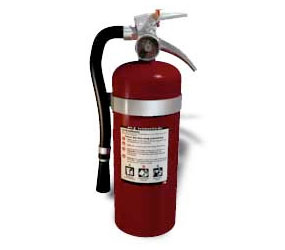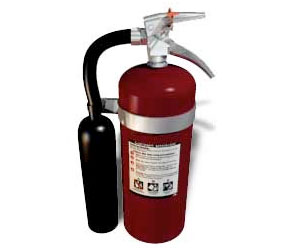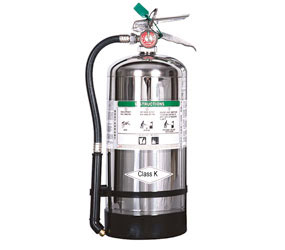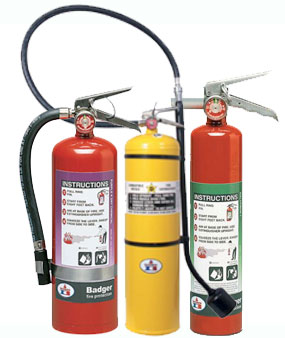Dry chemical extinguishers put out fires by coating the fuel with a thin layer of fire retardant powder, separating the fuel from the oxygen. The powder also works to interrupt the chemical reaction, which makes these extinguishers extremely effective.
Dry Chemical Extinguishers are usually rated for class A, B, and C fires and marked as multi-purpose extinguishers. They contain an extinguishing agent and use a compressed, non-flammable gas as a propellant.
ABC fire extinguishers are red in color, and range in size from five pounds to 30 pounds.
Dry Chemical extinguishers will have a label indicating they may be used on class A, B, and C fires.
Important:- These extinguishers will be found in a variety of locations including: public hallways, laboratories, mechanical rooms, break rooms, chemical storage areas, offices, commercial vehicles, and other areas with flammable liquids.





